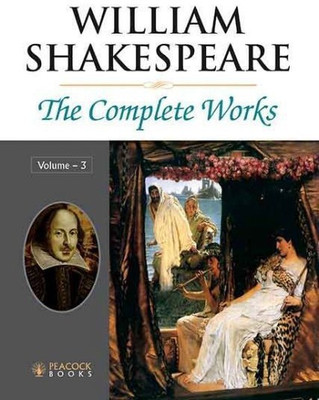William Shakespeare the Complete Works 1 Edition(English, Hardcover, Ray Ratri)
Quick Overview
Product Price Comparison
Shakespeare produced most of his work between 1589 and 1613. His early plays were comedies and historiesŌĆögenres he raised to the peak of sophistication and artistry by the end of the 16th century. He then wrote tragedies until about 1608, including Hamlet, King Lear, Othello, and Macbeth, considered some of the finest works in the English language. In his last phase, he wrote tragicomedies, also known as romances, and collaborated with other playwrights. Shakespeare was a respected poet and playwright in his time, and his reputation reached still greater heights in the 19th century. The Romantics, in particular, acclaimed ShakespeareŌĆÖs genius, and the Victorians worshipped Shakespeare with a reverence that George Bernard Shaw called ŌĆśbardolatryŌĆÖ. In the 20th century, his work was repeatedly adopted and rediscovered by new movements in scholarship and performance. His plays remain highly popular today and are constantly studied, performed, and reinterpreted in diverse cultural and political contexts throughout the world. ShakespeareŌĆÖs works include the 36 plays printed in the First Folio of 1623, classified as comedies, histories and tragedies. Two plays not included in the First Folio were: The Two Noble Kinsmen, which is attributed to John Fletcher and Shakespeare, and which did not appear in any of the subsequent Folios of ShakespeareŌĆÖs works, and Pericles, Prince of Tyre, which is now accepted as part of the canon, with scholars agreeing that Shakespeare made a major contribution to its composition. No Shakespearean poems were however included in the First Folio. William Shakespeare: The Complete Works, in four Volumes, is an unabridged edition containing every word that Shakespeare wroteŌĆöall 37 plays classified into comedies, history plays, tragedies; all of his 154 sonnets; his narrative poems, ŌĆśA LoverŌĆÖs ComplaintŌĆÖ, ŌĆśThe Rape of LucreceŌĆÖ, and ŌĆśVenus and AdonisŌĆÖ; a miscellany of 20 poems, ŌĆśThe Passionate PilgrimŌĆÖ; and ŌĆśThe Phoenix and the TurtleŌĆÖ, an allegorical poem. The two Introductions, one by Dr. R.S. Sharma and the other by Dr. Ratri Ray give the reader an overall view of how and why Shakespeare has become such an influential cultural icon, and how perceptions of his work have changed in the intervening four centuries. The Introductions summarise the known facts about the dramatistŌĆÖs life, his reading and use of sources, and the nature of theatrical performances during his lifetime. Brief introductions to each play discuss the date and contemporary context of the play and its position within ShakespeareŌĆÖs ┼ōuvre. The book will be useful for the students, teachers and researches of Shakespeare. It will be a proud possession for all Shakespeare readers and a must for college and university libraries.


